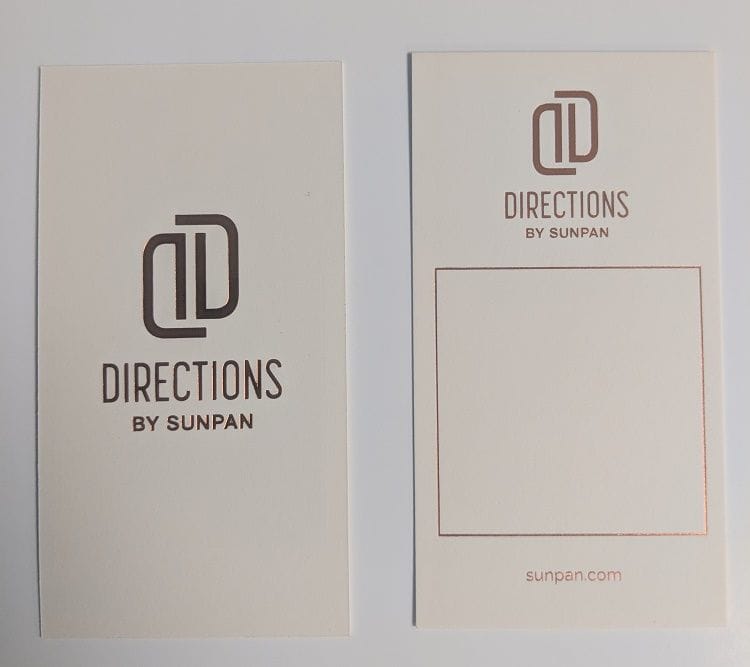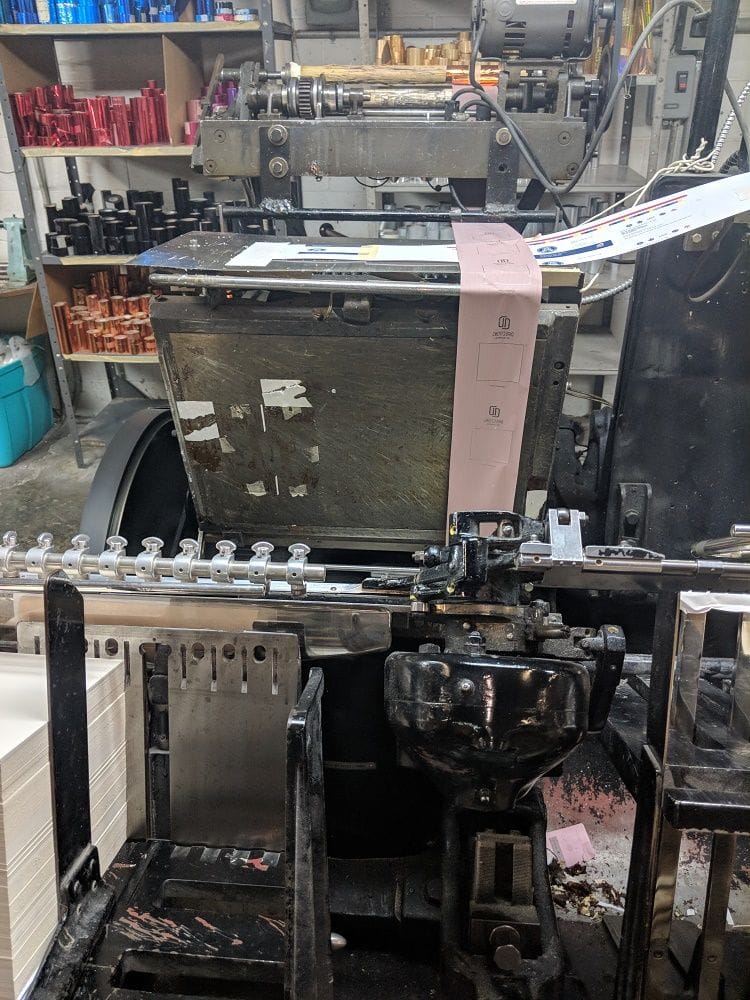
Dressing up your business cards, pocket folders, letter head and much more with foil.
There are many options when it comes to foil on print. Yesterday I came across a sample of a digital foil card and it got me thinking I should share all the ways you can embellish print with foil.
Digital Foil Using Toner

This Card is produced by first printing black toner, then the foil is pressed on top of the toner, sticking to the paper. The main benefit of this process is you can run cost effective short runs because there are no dies and setup costs. The only real drawback is if you want to print colours on your print material with foil, you have to print first, then add a layer of lamination, then print black and then foil on top. Doing this step adds extra cost and makes the digital foil process cost almost the same as traditional foil.
Digital Foil using MGI or Scodex Machine

Another way of producing foil on print digitally is by using an MGI or Scodex machine. The process for this is the cards get printed first, then the print material goes to the MGI or scodex machine and a varnish is sprayed onto the print material where the foil will be placed. Then the cards go through the foiling part of the machine. The amazing thing about this machine is the varnish can be 3 dimensional. Allowing you to create depth in your printed piece without having to emboss.The creative ideas are endless with this type of machine and it is great for proto typing and short run high end marketing pieces. The only real drawback with this technology is that there are not many of these in the market so prices are a premium. When designers and marketers see the creative options that are open to them this technology will take off.
Traditional Foil


Traditional foil or hot foil stamping uses heat to transfer metallic foil to a solid surface. Examples of this process includes business cards, pocket folders, product packaging, letter head, envelopes, product tags etc. This process is typically done on an old Heidelberg Windmill retro fitted for foil stamping. The benefits of using this method is that it is cost effective for larger runs and there is typically a large selection of foil colours and finishes you can use. Also, you are not limited to the thickness of paper you can use. The main down side of traditional foil is you have to buy a die that is used during the process, so if its a one off project and the quantitiy is low you will be paying a premium.
All of these different processes help in making your print stand out among the competition. If you are interested in learning more about these processes and how you can incorporate them in your next marketing project please contact me and we can discuss over a coffee!
Chris Downey
Print Consultant
905 447 0257
chris@graphicspg.com
| Tags:Monthly Update |
| Posted in:Monthly Update |
)
| Posted in:Monthly Update |
)
| Posted in:Monthly Update |